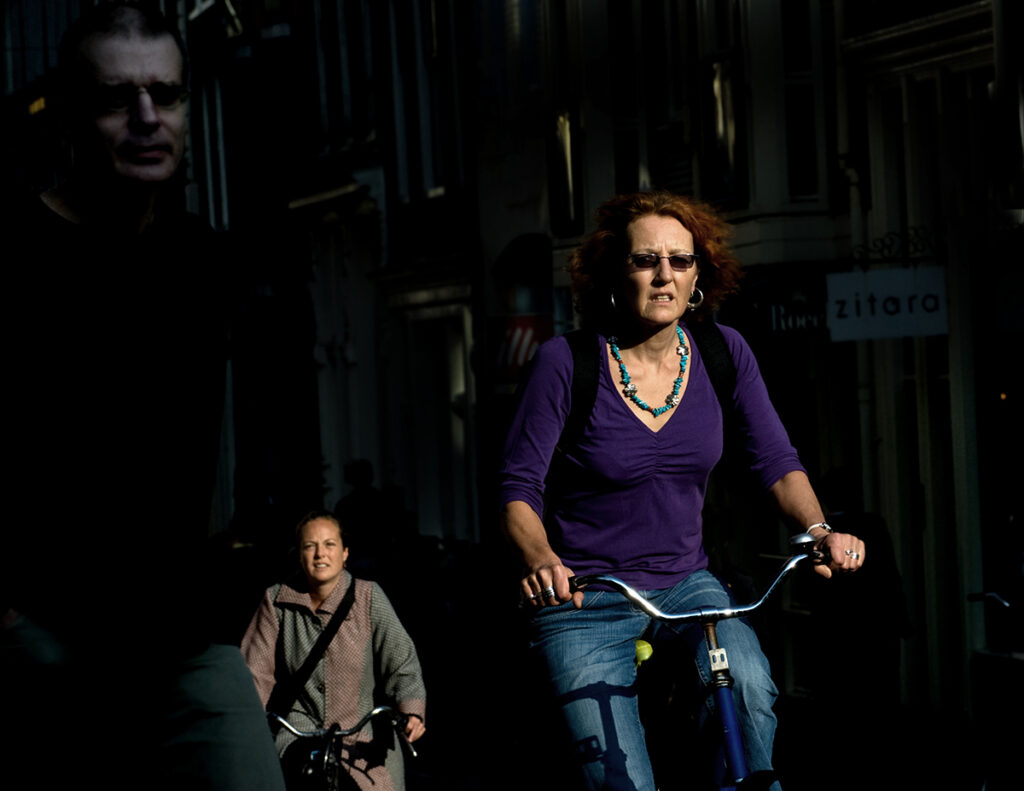The set Transmissie, capturing the faces of the people, one of the most cosmopolitan European cities – Amsterdam, including a very open and tolerant society composed of many races, religions and cultures. The result of many days of search and observation are momentary images of people in non-static positions, stemming from cultural compromise, diversity and high quality of life, which become the greatest attraction of this place. These portraits represent a special combination of stable tradition with the dynamics of society, when the afternoon streets are full of moving human rivers. Jackets, suits, flowing skirts, mottled, cheerful and eccentric clothes – otherness in any sense of the word is not only tolerated here, but rather welcomed.

To increase the drama of the image, brightness, contrast and movement are used for most shots in scenes that are a prominent element of the composition, where the predominance of dark tones contributes to creating a special atmosphere. Such an intense penetration of light was once masterfully used in his work, even in this place, by the celebrated Rembrandt, who once raised the possibilities of chiaroscuro to almost magical heights through the mutual relationship and the effect of modeling the object with light on a dark scene.



Unrepeatable types of people come and disappear again in the complementary dark background of the urban streets of this city, where we can easily lose ourselves thanks to their twists resembling threads in a spider’s web. A wonderful place to get lost. A place that cannot be described briefly, a place with a soul expressing promise, diversity, wealth, trust and determination. If you visit it, maybe you will see the soul… I believe that if this city did not exist, we would have to invent it…



Evaluation of the author’s work by Jan Hlavatý:
Art photographer Jiří Nováček takes the relationship to historical times in imaginary contrast to the Dutch present as the object of his rendering. He was inspired in a metaphorical sense by the genre painting of artists of past times and especially of the 17th century, as well as portrait works by Frans Hals, Vermeer van Delft and Rembrandt van Rijn.
Especially the chiaroscuro technique, which Rembrandt is most famous for as a creator in the art world. It was the strongly expressive monumental painting of the figural composition, called Night Watch, in which the individual figures seem to emerge from the mysterious darkness of the picture background, that was the author’s strongest inspiration for capturing the fleeting moments of the pulse of the present in the portraits of people, irradiated by the late afternoon sun in contrast to the darkness from which they emerge , or they drive out, into over-radiated lighting.



In the current photo display, taken after careful preparation, one can see the author’s inspiration from the art of the 17th century, which brought Dutch painting to the top of world fine art. It is continuously followed by the present with its attributes of the needs of today’s life, which are documented in photographs. Just as, four centuries ago, ancient ice skaters were depicted in genre scenes, moving for long winters along frozen water channels, so today people move by other means that the modern world requires for use.
In the paintings of faces irradiated by the afternoon sun, which update the legacy of the portrait painting expression of Flemish painters, Jiří Nováček, after concentrated study, managed to successfully capture the state of the current variety and rhythm of life in the Dutch metropolis with convincingly composed shots.


